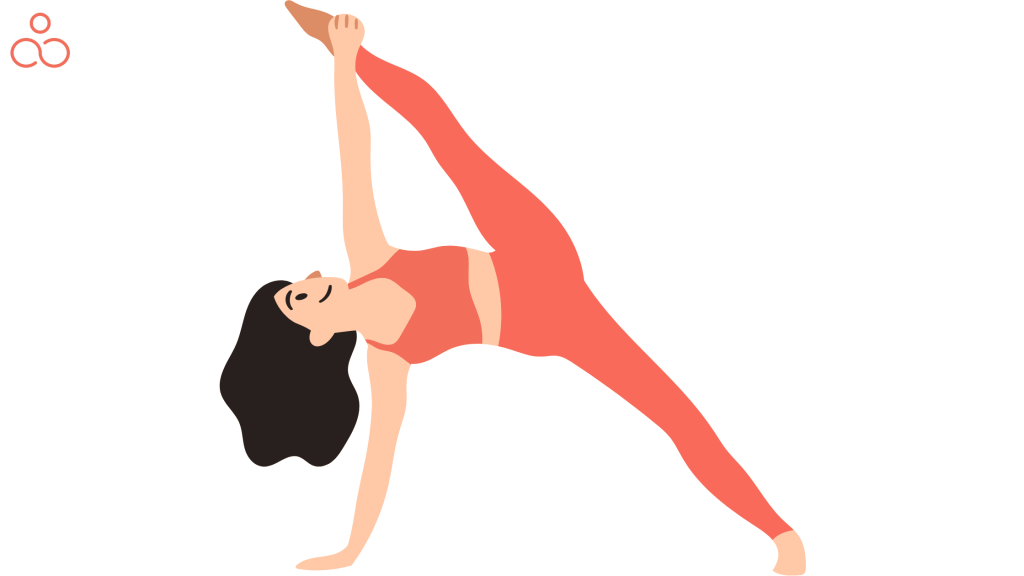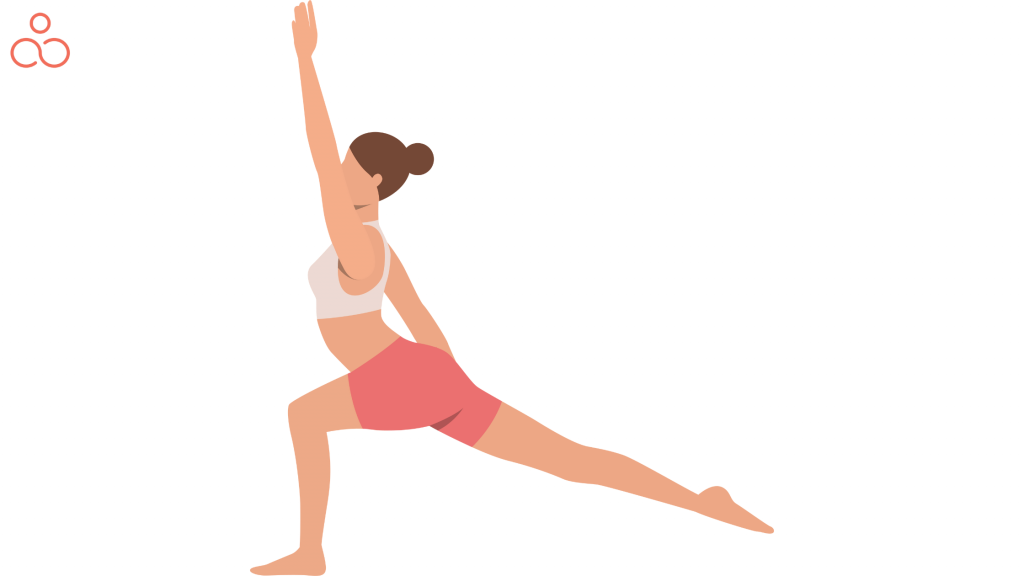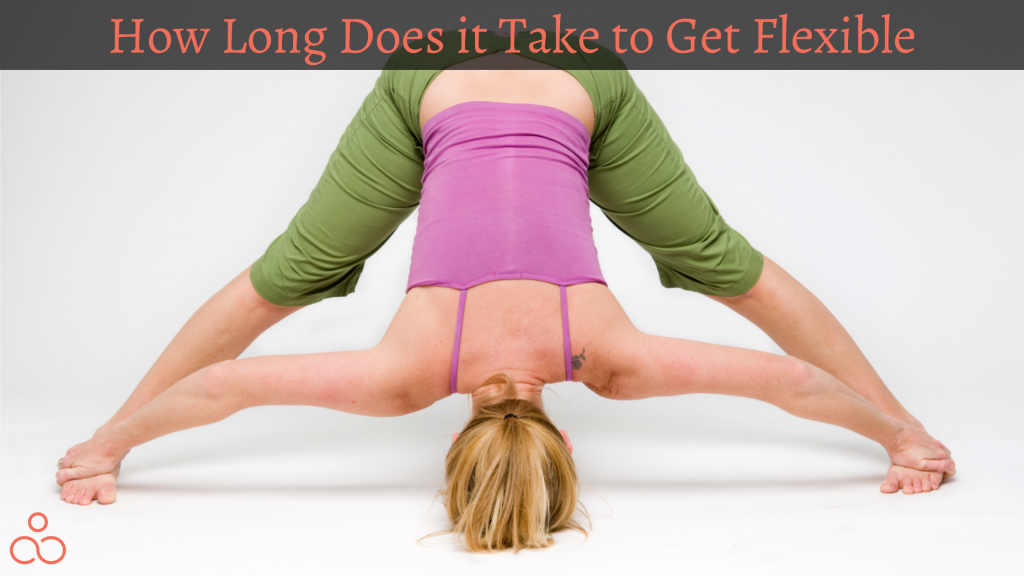Unquestionably, one of the seriously neglected components of fitness is flexibility. While many individuals are eager to develop flatter abs and larger biceps, flexibility appears to be given very little consideration, if any. The majority of people spend most of their days sitting in the same posture for eight hours straight during their work hours. Later even when they exercise the preparation frequently focuses on developing strength in only a few select places without taking into account how the entire body needs to function as a complete one. So, if you’re stiff, achy, fatigued, and immovable. It’s possible that you’ve lost a lot of flexibility. We’ll go through scientific research and give practical strategies you can start implementing right away to understand how long does it take to get flexible and things you can do to accelerate the process.
How Long for Better Flexibility?

Since everyone’s body is unique, there are currently no conclusive solutions to this question. While some could need months or years to see benefits from their exercises, others might discover success in as little as a few weeks. What does this imply? You ought to act in accordance with your body’s instincts! After six months of practicing flexibility exercises, if you don’t feel like anything is improving, quit and try something new.
The hamstrings are one of the body parts where we experience flexibility issues most frequently. Not only does this provide an issue for regular people like us, but it also poses a concern for some sportsmen as a major source of injury. How long would it take you to permanently improve flexibility and stretch out your hamstrings?
The answer to this question will depend on a number of variables, such as how frequently and how effectively you stretch. Your amount of flexibility right now and your genetic makeup both matter a lot.
To reap the best results of stretching, the American Council on Exercise (ACE) recommends stretching every muscle for 30 minutes at least three times each week. Whenever you think about it, this is a lot of time – if you committed this much time to working out and strength training, you’d be in great shape.
How to speed up flexibility?

The best part is that you don’t have to wait months or years to increase your flexibility.
Stretch on a daily basis – This makes improving your flexibility simpler and faster since you are always trying to keep up with it rather than waiting for a huge shift.
Practice yoga frequently – Yoga improves blood flow, which improves circulation throughout the entire body, even those tight muscles! It also increases the amount of oxygen in the cells, resulting in higher tissue flexibility.
If you are unable to overcome old sedentary lifestyle habits, make little alterations to your daily routine, one at a time, such as utilizing a yoga ball rather than a chair at the office if allowed or going for walks during breaks to maintain flexibility. These small changes can actually bring in many positive changes.
How does flexibility work?
When working on your flexibility, it’s helpful to understand what you’re working on, and what occurs physiologically in the body while you focus on improving your range of motion.
In reality, there are multiple changes that occur in the body that contribute to flexibility, rather than one. Stretching affects not just the muscles around the joint, but also the ‘yellow’ ligaments (there are also ‘white ligaments’ that do not stretch and help in rigid construction). Tendons do not stretch either, but there is an additional factor called “stretch receptors”. Stretch receptors are neurons that transmit signals to our muscles about how to contract and relax (they are mechanoreceptors linked to the medulla of the brain). Stretch receptors basically notify our muscles when they should cease extending since they are potentially damaging.
What type of stretching is best for flexibility?
Stretching is classified into three types: static, dynamic, and PNF (contracting a muscle). Static stretching has been demonstrated to be the most effective method for developing flexibility. It is most effective when stretches are held between 15 and 30 seconds. Contracting a muscle right before stretching will help you make even more progress. In addition, studies have shown that a contraction intensity of 20% to 60% of maximum contraction is equally as efficient for expanding the range of motion as procedures that contract the muscle to 100%.
While studies demonstrate that infants do not respond significantly to shorter or longer stretching procedures, older individuals respond better to 60-second stays than shorter ones. The optimal sort of stretch also depends on gender; males and adults under 65 years old benefit more from the PNF method, whilst women and people over 65 benefit more from static holds. The American College of Sports Medicine suggests static stretching at least twice a week for most people. It is recommended to hold any given stretch for 15 to 30 seconds and repeat it until you reach 60 seconds.
In light of these results, there are two sorts of stretching you may undertake to enhance flexibility:
Static stretching: Static stretching, also known as passive stretching, urges practitioners to stretch the muscle to its full range of motion. You feel a mild tingle but no discomfort in this posture. Hold the posture for fifteen to thirty seconds, then release and repeat up to three times more before moving on to the next stretch. Warm up your muscles prior to performing static stretching, since straining cold muscles might result in harm. When you initially begin stretching, you may experience your body tightening. It’s your body’s attempt to protect you. Relax and breathe deeply, and the muscles will gradually release, allowing you to move further into the stretch without using force. Check out this clip for 25 static stretching poses.
PNF (Proprioceptive Neuromuscular Facilitation) Stretching: Although static stretching is the most often utilized method of stretching for flexibility, an increasing number of people feel PNF is more helpful. This was also demonstrated in the 2014 edition of the Journal of Sports Medicine and Fitness, which discovered that PNF builds flexibility more quickly and more effectively than passive stretches. To do PNF, one must alternately relax and contract the muscle while stretching. For example, if you’re in a forward fold and attempting to stretch your hamstrings, contract the muscles for 5 seconds, relax for 5, then contract the muscles again and alternately until you reach 30 seconds. Repeat 2-3 times more.
Whatever form of stretching you undertake, discipline will influence how much flexibility you get. Be patient, even if you don’t see any big improvements straight away. Stretching on a weekly basis will cause your body to adjust and you will see changes, just like any other sort of exercise.
The basics of flexibility training
If you are committed to enhancing your flexibility, you should approach it in the same way you would handle any other aspect of your health and fitness. This implies you should develop a pattern or exercise and repeat it on a regular basis. Flexibility training may be added at the beginning or conclusion of weightlifting or aerobic exercise. To begin noticing improvements, you should stretch for ten to twenty minutes every other day.
One can also find opportunities to practice being flexible throughout the day. Are you stuck at the bus stop? Just try to stretch a few seconds!
You can discover lots of stretches to utilize by searching the internet, and if you’re stuck for ideas, consider turning to yoga, which contains a number of stretches that are also wonderful for balancing and core strength. Choose a set that looks good and will target every major muscle group, then go through them in a sequence, holding each position for around 20 seconds before moving on to the next. If you ‘bounce’ into the activity (‘ballistic stretching,’ you risk injuring yourself.
How long does it take before I get flexible?
On average, people begin to show effects within three or four weeks of consistent stretching. Significant gains, such as hitting the splits, might take more than a year. Aside from being consistent and selecting the appropriate stretch routine, here are some more things you may do to accelerate the process.
Warm-up – Muscles should be warm before stretching to avoid injuring and tearing them. Five to ten minutes of gentle cardio would be an excellent warm-up. It’s also a good idea to stretch following a different type of activity, such as weight lifting. It’s an excellent approach to stretching after a workout and will make it simpler to develop consistent stretching habits.
Don’t Rush: As counterintuitive as it may appear, stretching gently helps hasten your outcomes. By not doing too much too quickly, you enable your muscles to calm and move deeply into the stretch, and you avoid injuries that might prohibit your form from stretching at all.
Foam Rolling: It is a technique that is becoming more and more well-liked since it helps to break up fascial adhesions. These are the places where there is an injury to the fascia. The connective tissue holds the muscle fibers together and decreases flexibility. Foam rolling aids in the release of knots; speeds up healing, and lessens pain. Before stretching, you may integrate foam rolling once you’ve warmed up.
Nutrition: When strength training or attempting to reduce weight, most of us are aware of the significance of food. However, it’s equally crucial for optimum flexibility gains. Consuming adequate potassium and sodium as well as drinking enough water will assist muscles to relax and prevent cramps. Muscle healing will be aided by protein. Another element crucial to a range of motion is the lubrication of your joints, which essential fatty acids assist with. If you feel a lot of tightness, you may also try utilizing natural muscle relaxants.
Dynamic Stretching – While dynamic stretching has only been demonstrated to enhance the range of motion in people who are already flexible, it can still be a fantastic supplemental workout. When you stretch dynamically, you shift your body weight through a full range of motion, such as when you squat or lunge. Before performing passive stretches, it may be helpful to warm up and engage the appropriate muscles. It can also assist with tighter places that hurt when you attempt to retain a static position for an extended period of time. Here is a 11 minute dynamic strechting video
Benefits of increased flexibility
The primary benefit of improving your flexibility is that it makes it easier for you to carry out routine tasks. We may enhance and maintain a healthy range of motion by stretching often because this function deteriorates naturally as we age. However, improved flexibility brings along many benefits:
Lower Injury Risk – Those who typically exclusively engage in strength training will be able to clearly see this improvement. Strength training causes the muscles to shorten and stiffen, which can reduce the range of motion and lead to imbalances. As a consequence, you don’t effectively stimulate the right muscles when performing an action, which can result in lower back, shoulder, neck, and knee ailments. Your body is better balanced when you stretch regularly, and you have a much lower chance of getting hurt while exercising.
Increased Circulation – Although our vascular system is considerably more sophisticated than our heart, heart health is essential for circulation. It affects our entire body and is affected by both movement and inactivity. Your circulation in such places may be compromised if you have tightness in those locations. Stretching can relieve these tension-filled spots and enhance your body’s general circulation.
Reduced Pain – As we become older, many of us start to feel chronic pain, particularly in the joints and lower back. We also tend to get more painful and crampy muscles. These problems can have a variety of reasons, but sedentary behavior and a limited range of motion are frequent reasons to blame. For instance, tight hip flexors and shoulders can lead to neck discomfort, while tight hamstrings are frequently the source of lower back pain. You can reduce your discomfort by extending your muscles and striking a balance between strength and flexibility.
Sit Comfortably – Sitting for lengthy periods of time might be quite painful if you frequently travel or hold a desk job. This is largely due to reduced movement, and once it returns, it will be much simpler to remain in one place for extended periods of time.
Healthy Nervous System – Our mobility, or lack thereof, has an impact on our nervous system in a manner similar to how circulation is impacted. Shortened tissues may impede the nerves and impair their functionality. The feeling of self-movement commonly referred to as our “sixth sense,” will be more apparent as your flexibility improves. The wrists, hands, shoulders, and feet often show the best effects.
There are several benefits to having more flexibility for you, and these benefits go well beyond being able to perform the splits. It’s encouraging that we may see changes within a month, especially because just three stretching sessions per week are required to enjoy all these wonderful advantages.
Takeaways for improving flexibility

You must be able to respond “yes” to the question of “did I do sufficient to get just a bit better” at the conclusion of each day and each week. If you are unable to, you did not practice your mobility enough to get better.
- Include your mobility exercises in your daily activities, preferably many times every day. Do each key region for at least 10 minutes each day.
- Prioritize one or two tasks at first if you need to focus on other things, so you aren’t spread too thin.
- Use a combination of self-massage, stretching exercises, and (importantly) strength training close to your range of motion’s limitations. It should go without saying that they should be painless while still enabling effective management.
Once you’ve reached the desired level of mobility, you might enter a maintenance phase. Once or twice a week, do your entire routine. Beyond that, the most important thing is to keep in mind that you should exercise your whole range of motion each day. Make it a habit to often raise your arms aloft in the case of overhead mobility. Include some fundamental exercises to emphasize the idea of moving your body through its complete range of motion. Include a few of your drills in your warm-up and cool-down, focusing on the ones that emphasize strength.
FAQ’S
Is It Possible To Increase Flexibility?
Yes. Stretching increases flexibility. The ideal stretches for that are static ones, in which you maintain a single posture for more than 15 seconds and then repeat it until you have held it for 60 seconds. The health and suppleness of muscular connective tissue can be improved by longer, more relaxed stretches sustained for longer than 120 seconds, which also greatly aids in increasing flexibility.
How soon can I do splits?
This heavily relies on your starting position and how your body is constructed. While most individuals need months or even years to get there, more flexible persons may achieve the splits in a matter of weeks. It’s crucial to avoid forcing it if you want to achieve the splits because it’s really simple to get hurt that way. Your development will entirely stop if you are unable to do the stretches due to an injury. For the quickest results, practice your splits a couple of times each week without overworking your body. It appears that if you stretch often enough (about five times per week), you should expect to see substantial improvements within the first few weeks, even if you aren’t training for the 1.5 hours every week. If you want to accomplish full splits, you’ll need to train for around two months.
How to build flexibility into your weight training routine?
If the idea of working out specifically to improve your flexibility makes you uncomfortable, you may save time by integrating your stretching routine into your weightlifting. This may entail, for example, lunging deeper. Also, try to have a stretch routine as a cool down. Some fitness experts follow a combination of weight training combined with a short session of yoga at the end to cool down, as it helps give a good stretch!
Can yoga help me with my stretch goals?
Yes, yoga is a good tool to stretch deep and mold your physical and mental health to a perfect state. Yin yoga in specific is an excellent style that practices pose for longer durations and helps in accessing the deeper layers of the body.
Conclusion
After about three to four weeks of consistent stretching, flexibility increases. According to several studies, stretching three times each week yields the best outcomes. Static holds and PNF stretches are the greatest stretches for increasing flexibility. The most critical component in developing flexibility is consistency. Without developing discipline and a consistent stretching practice, we won’t advance and keep up our results. So, just start moving your body!

